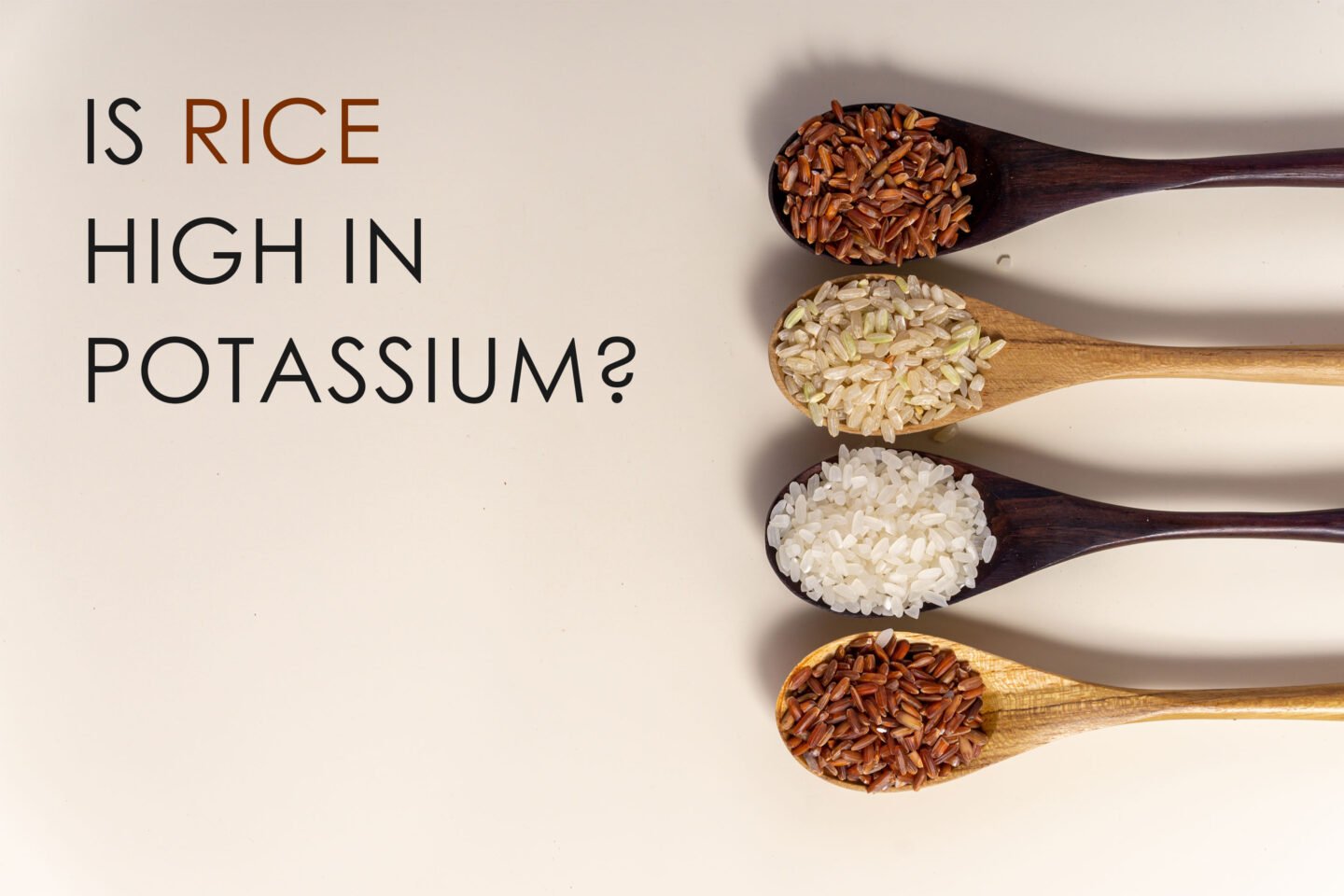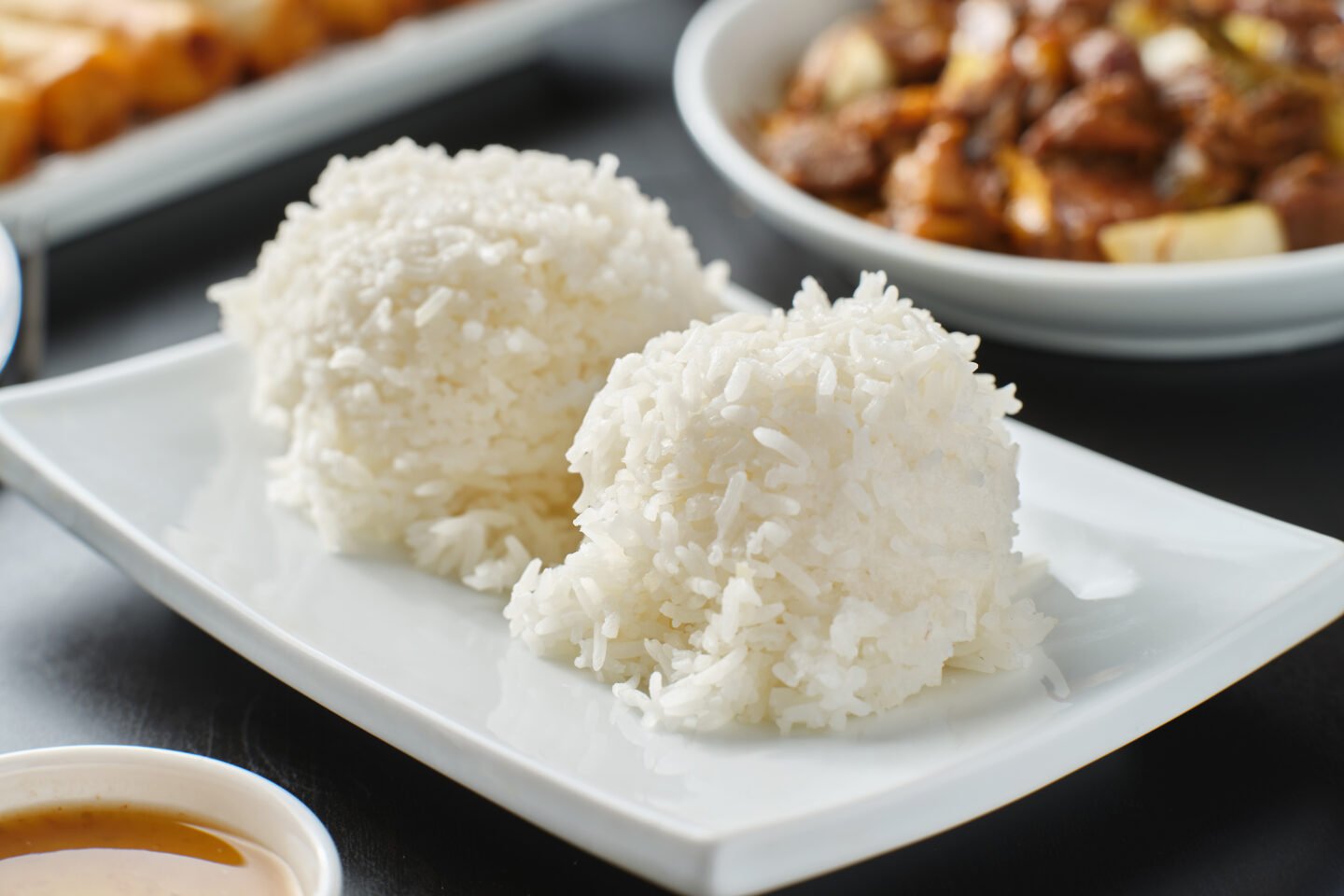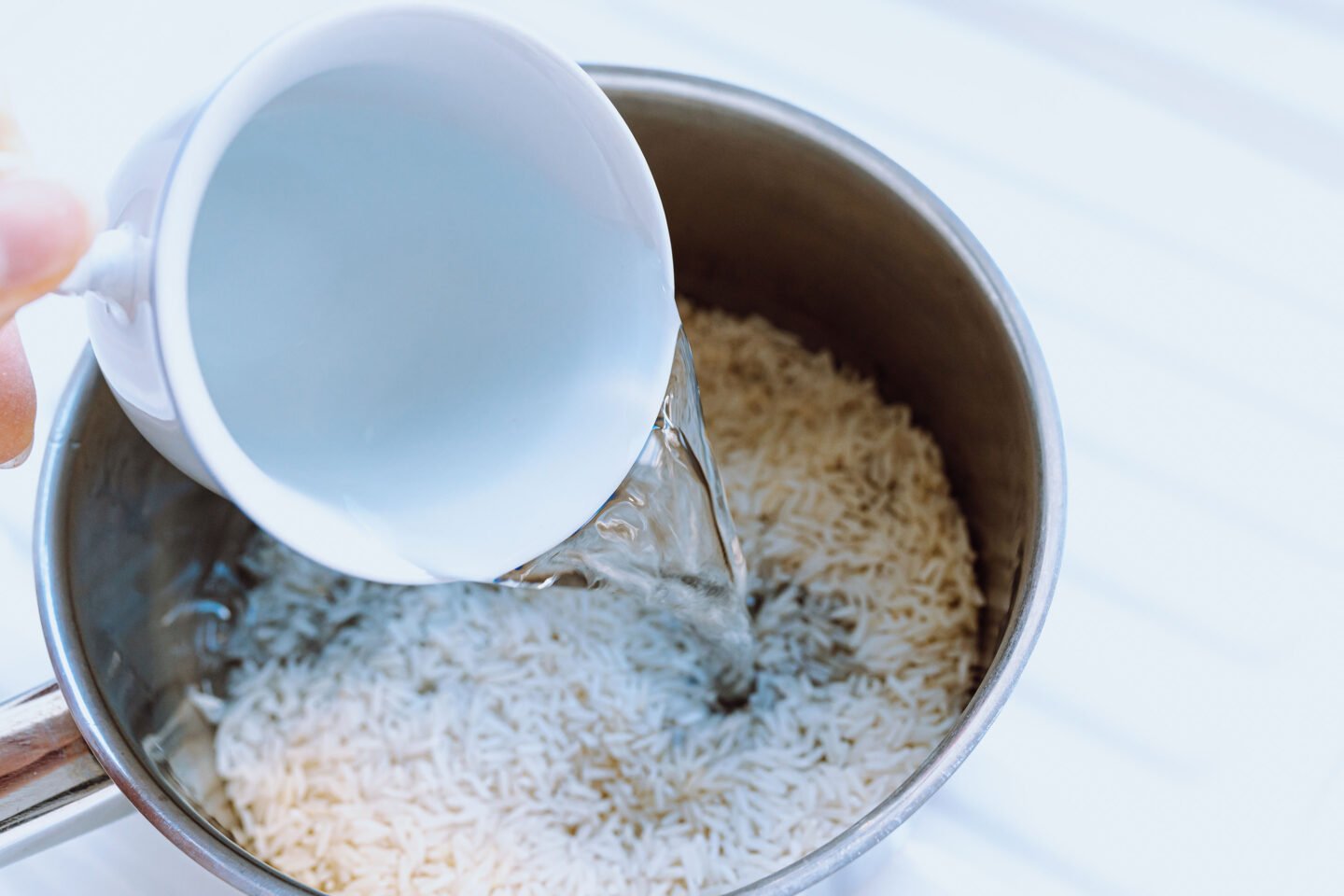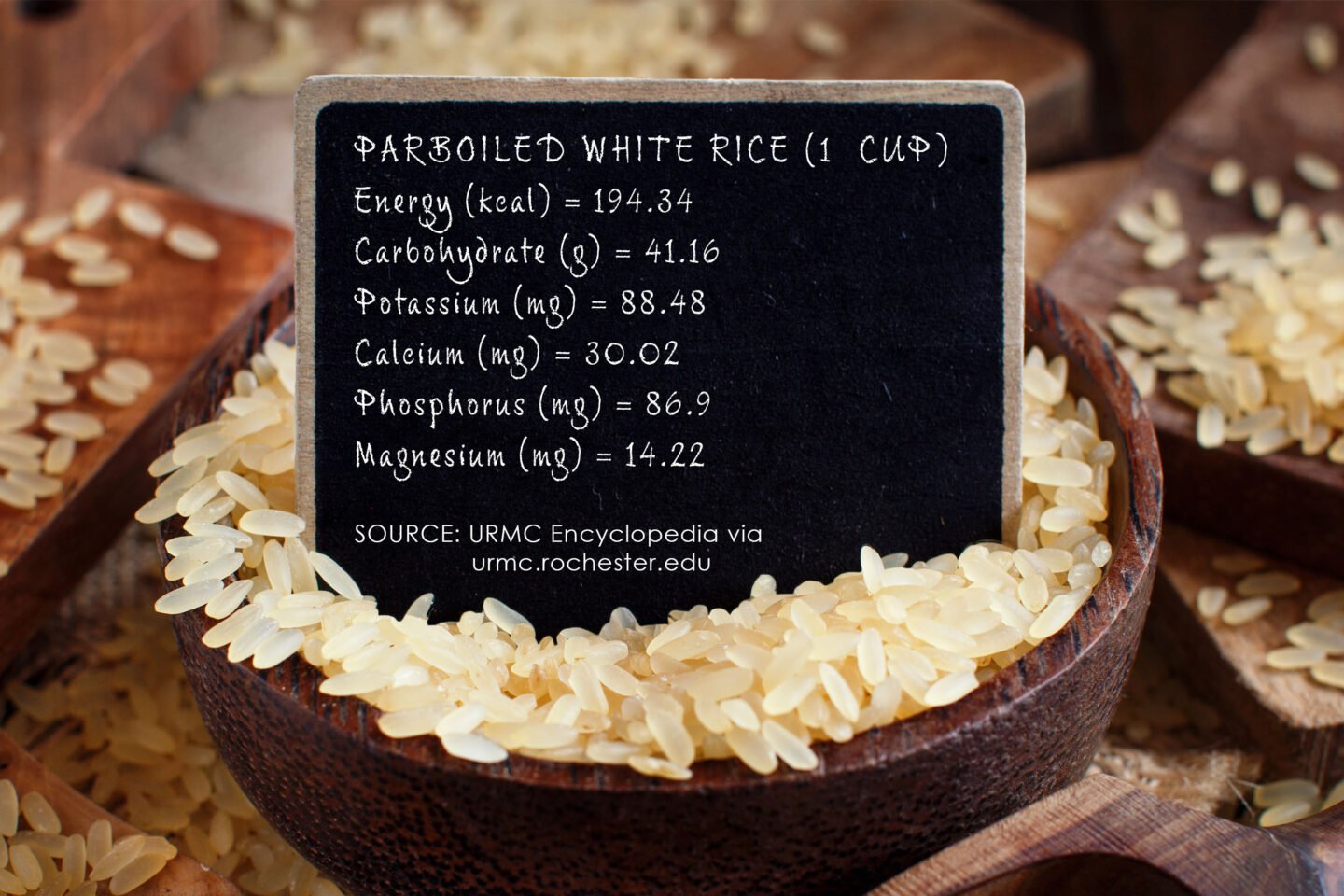Rice is a critically important food staple in many cultures, especially in Africa and Asia. It's also becoming more popular in the west, as it's low in fat and carbohydrates, and some varieties are excellent sources of dietary fiber.

However, many people now follow diets to increase or decrease their intake of specific nutrients, such as potassium. For example, those with kidney disease may want to avoid getting too much potassium in their diets.
For these people, it's vital to know the potassium content of different common foods, including rice.
Table of Contents
Is Rice High or Low in Potassium?
Unlike some grains, rice is low in potassium. Therefore, most people following a low-potassium diet should be able to safely include it in their meal plans.
However, potassium helps regulate blood pressure and heart function, so even those on such a diet need some.
Can You Check Your Potassium Level at Home?
How Much Potassium Is in Rice?
The recommended daily potassium intake is 4,700 milligrams.
A cup of cooked white rice contains around 35 mg of potassium, less than 2% of the recommended daily intake for adults. A cup of brown rice contains 84 milligrams per cup.
The potassium content of rice may vary depending on soil and growing conditions and is also affected by processing. For example, parboiled rice contains more potassium than white because it is not as processed.
Rice grown in tropical countries generally contains more potassium than that from temperate countries, as the soil is richer in minerals.
Is Rice a Good Source of Potassium?
White rice won't significantly contribute to your recommended daily potassium intake. However, brown rice can contain around 12% of the recommended daily intake.
Is Rice Healthy?
Rice is low in fat and carbohydrates, and I've listed some of its health benefits below.
Rice is low in fat and calories
A cup of cooked white rice has around 200 calories, less than other starchy foods, such as pasta and bread.
Rice is a good source of vitamins and fiber
A cup of cooked white rice has around 1 gram of dietary fiber, which aids digestion and weight control.
Fiber may reduce the risk of disease, such as heart disease and cancer, and regulates blood sugar.
Rice is a good source of thiamin, niacin, and vitamin B6, essential for a healthy metabolism and nervous system. They may also reduce the risk of heart disease and other chronic diseases. B vitamins are water-soluble, so your body doesn't store them and needs a daily intake.
Rice is gluten free

Gluten is a protein found in wheat, barley, and rye. It can cause inflammation and digestive problems in people who are sensitive to it. Rice is safe for those with celiac disease or gluten intolerance.
Rice is easily digestible
Rice is a good choice for people who have trouble digesting other grains, as it's easier to digest and doesn't cause bloating.
Is Rice Good for People with Kidney Disease?
Some sufferers of kidney disease need to restrict their potassium intake, and rice is a great choice.
All potassium sources in your diet must be considered should you suffer from kidney disease. High-potassium foods include bananas, potatoes, tomatoes, and spinach. If you have any doubts, please speak to your doctor before adding rice to your meal plan.
Can the Potassium Content of Rice Be Lowered?

Yes, by soaking it in water for at least 30 minutes. The longer it's soaked, the more potassium will be leached. However, soaking also removes other nutrients.
Conclusion
Rice is nutritious, gluten free, and very versatile in the kitchen. As it's so low in potassium, it's safe for most following a low-potassium diet.
However, other dietary choices would be better if you want to increase your potassium intake.
Don't know which foods are high in potassium? Read our article, 15 Best Food Sources of Potassium. We also have a guide to this important mineral: Potassium 101: All You Need To Know About Potassium.

